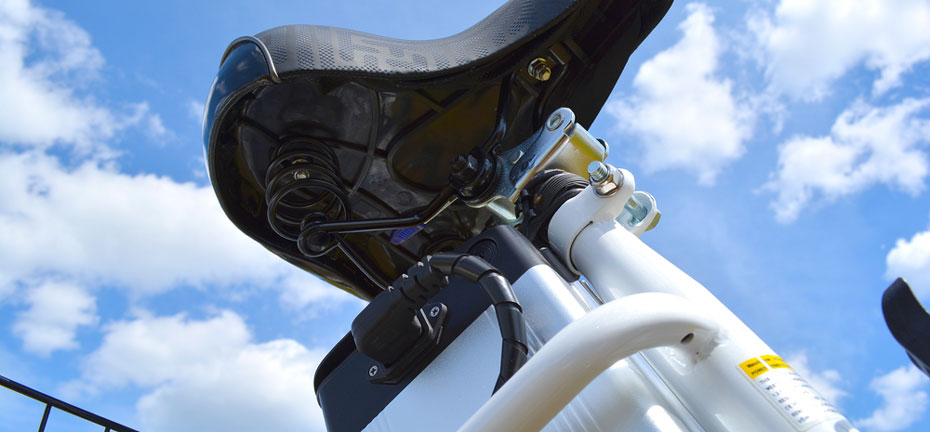Obviously, we love our e-bikes at Trendy Ride, they’re a great alternative to other forms of transport. But in this guide, we’re going to be completely up-front and honest about the 9 main downsides to this kind of bike.
If you’re new to electric bikes and wondering what’s the catch? This guide is for you.
We’ll cover all the downsides, especially compared to old traditional low-powered cycles.
9) e-bikes are expensive
Electric bikes cost considerably more than conventional non-powered bicycles and are a significant investment. The cheapest and most bare-bones electric bike will set you back around £379, and when you start looking at top of the range electric bikes, the sky is the limit when it comes to purchasing prices!
The main reason for the additional expense is of course the extra components (battery, motor, running gear) that are necessary for electric bikes. Electric bikes also often require a more sturdy frame and many component parts simply cost more to manufacture.

8) There’s more that can go wrong!
All those extra parts and components not only add expense, but they can also be a headache to maintain and repair when things go wrong.
Electric bikes can withstand some pretty gruelling treatment, but prolonging the life of your new eclectic bike is going to take a considerable amount of work compared to a conventional bicycle.
Batteries and electrical devices hate the cold so storing your electric bike alongside your normal bike in the garden shed or chained to a lamp post may not be the best option.
The motor of an electric bike will also require regular care and service, and like any moving part on any bicycle will experience general wear and tear over time.
Fixing any of these more expensive components found on an electric bike is not only annoying, but it can make a dent in the wallet.
7) Electric bikes weigh more than non-electric ones
It’s no secret that electric bikes are going to weigh considerably more than your carbon fibre racing bike, but what many underestimate is how much more.
It’s fair to say that electric bikes are not exactly the easiest piece of kit to carry up the stairs every day as part of your daily commute.

Most conventional road racing bikes weigh around 15-18 pounds (7-8 kg) and the average mountain bike weighs around 29 pounds (13 kg). On the other end of the scales, the average electric bike weighs in at a muscle-burning 45-50 pounds (18-22 kg).
6) You’ll get less exercise
Depending on how you use your e-bike you can end up doing a lot less exercise than on a road bike. While this is a good thing for some, especially if you’re normally not able to cycle uphill or for longer periods, you will be doing less work yourself.
We’ve all skipped leg day at the gym from time to time and used cycling to/from the gym as a perfect excuse.
Let’s face it, buzzing around town on your trendy new electric bike will likely burn as many calories as sitting on a bus, and your personal trainer will likely double down on squats after they see you glide from the gym on an e-bike.
Sorry!
On the flip side, if you’re using your e-bike to smash those hills you’ve always been too scared to try on a normal bike, then all is not lost. If you’re only using the pedal-assist on the lowest setting while getting around town, it’s likely that you’re giving yourself a healthy dose of exercise in the form of low-intensity exercise, which is actually good for some cyclists as opposed to more intense exercise done less frequently.
5) It could get stolen
Losing your trusty steed to a thief is a painful experience anytime and any bike can be a target for thieves, especially expensive, carbon frame bikes. But things could seem worse when you’ve dropped the same amount of cash on an e-bike that could have bought yourself a small car.
The extra cost of electric bikes makes them a very attractive dinner ticket for any would-be thief so it’s worth considering a safe parking location, preferably behind closed doors on private property. If you’re going to drop a month’s paycheck on an electric bike, then invest in a really good lock, or maybe even two!

4) You can’t take them on a plane
Electric bikes are a staple for the trendsetting urban explorer. They’ll whizz you around town with a carefree (and sweat-free) manner that will earn you many envious looks from pedal-powered cyclists as you buzz by.
One problem is that you really are limited to their battery range, and taking them on flights is a serious no no!
Electric bikes are typically banned from flying on commercial aircraft due to the battery.
Most electric bikes have large lithium-ion batteries that are rated around 250Wh, well over the limit of what’s permitted on flights (100Wh).
While some airlines will allow the carriage of electric bikes that have batteries below 160Wh, a permit and prior permission are required.
3) They’re not as green as you might think
Sure, they’re a far greener mode of transport when compared to gas-guzzling cars, trucks, and motorbikes, but compared to the old faithful pedal-powered bike, e-bikes are less green.
There are two main reasons. First, of course, is the fact that electric bikes require regular charging with most lithium-ion batteries capping out at around 30-50 miles range.
Unless you’re living off-grid and charging your e-bike with your own green energy source (i.e: solar panels), then that energy consumption has an environmental footprint, the same as your humble kettle or TV.
Speaking of environmental footprint, point number two for a thumbs down on e-bikes is how non-recyclable their components can be. Most Lithium-ion batteries are advertised with a shelf life which is roughly around 2-3 years (depending on the brand of battery).
After this time, you’ll likely find that your battery is as useful as a large paperweight and will need replacing, and sadly, most batteries cannot be recycled.
If you’re trading in your car for an e-bike or using your car less as a result then the environmental benefits still outweigh replacing a battery every once in a while.
2) Insurance covering components

One thing that’s become a lot more common in line with the uptake in e-bike sales is e-bike aftercare and insurance. The reason is simply things can go wrong with an electric bike and when it does, it’s likely going to be expensive to fix.
Any conventional bike owner can offer tales of despair, stuck on a dusty track somewhere with a puncture, a buckled wheel, or worse a bent disk brake or bike frame.
Electric bikes are no different: they are feature-packed and have all of these components too, and a lot more expensive parts such as batteries, electrical systems, and motors, that all cost more to fix.
1) They don’t like the rain
Yep, sadly e-bikes aren’t geared towards bad weather (like many of their bike counterparts and owners).
E-bikes have extra parts that don’t take too kindly to the sometimes unwelcoming weather that we experience in the UK. What’s more, some of them have a lack waterproofing so you need to be conscious of this when you choose one.
Storing them inside your garage or home is the best way to keep them safe and happy.
Well, they’re downsides to electric bikes. Of course, there are just as many positives to them.
Nothing is perfect and e-bike technology improves every year, as does their popularity. This lowers the cost and leads to enhanced design and longer-lasting parts. That’s great for the environment and all the people out there wanting to join the e-bike revolution.